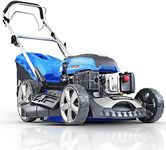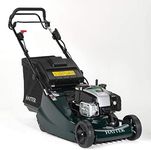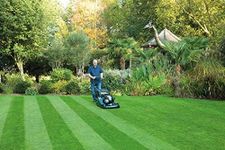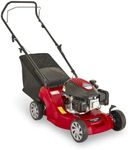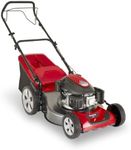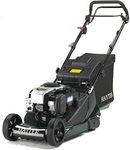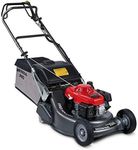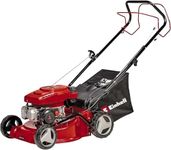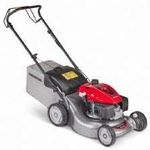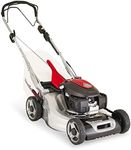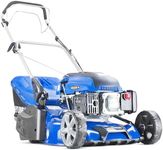Buying Guide for the Best Petrol Mowers
Choosing the right petrol mower can make a significant difference in maintaining your lawn efficiently and effectively. Petrol mowers are known for their power and ability to handle larger lawns with ease. When selecting a petrol mower, it's important to consider various specifications to ensure it meets your specific needs. Here are some key specs to look out for and how to navigate them.Engine PowerEngine power, measured in horsepower (HP) or cubic centimeters (cc), determines the mower's ability to cut through thick and tall grass. Higher engine power means more cutting strength and efficiency. For small to medium lawns, an engine with 125-150cc is usually sufficient. For larger lawns or tougher grass, consider engines with 190cc or more. Choose based on the size of your lawn and the type of grass you have.
Cutting WidthCutting width refers to the width of the mower's cutting deck and determines how much grass is cut in a single pass. Wider cutting widths (20-22 inches) are ideal for larger lawns as they reduce mowing time. Narrower cutting widths (16-18 inches) are better for smaller lawns or areas with tight spaces. Select a cutting width that matches the size of your lawn and the amount of maneuverability you need.
Cutting Height AdjustmentCutting height adjustment allows you to change the height at which the mower cuts the grass. This is important for maintaining the health of your lawn, as different grass types and seasons require different cutting heights. Look for mowers with multiple height settings (usually 1-4 inches) to give you flexibility. Choose a mower that offers easy and precise height adjustments to suit your lawn care routine.
Self-Propelled vs. PushSelf-propelled mowers have a drive system that moves the mower forward, reducing the effort needed to push it. This is especially useful for larger lawns or hilly terrain. Push mowers, on the other hand, require manual effort to move and are better suited for smaller, flat lawns. Decide based on the size and topography of your lawn and your physical ability to push the mower.
Grass Clipping ManagementGrass clipping management refers to how the mower handles the grass clippings. Options include bagging, mulching, and side discharge. Bagging collects clippings in a bag for easy disposal, mulching finely chops clippings and returns them to the lawn as fertilizer, and side discharge ejects clippings to the side. Choose a mower with the clipping management option that best fits your lawn care preferences.
Fuel Tank CapacityFuel tank capacity determines how long the mower can run before needing a refill. Larger tanks mean longer mowing sessions without interruption, which is beneficial for larger lawns. Smaller tanks are lighter and may be sufficient for smaller lawns. Consider the size of your lawn and how often you want to refuel when choosing the fuel tank capacity.
Weight and ManeuverabilityThe weight of the mower affects how easy it is to maneuver, especially around obstacles and on slopes. Lighter mowers are easier to handle but may have less power. Heavier mowers are more stable and powerful but can be harder to push. Balance the weight with the power and consider your physical ability to handle the mower when making your choice.
Durability and Build QualityDurability and build quality determine how long the mower will last and how well it can withstand regular use. Look for mowers with sturdy construction, preferably with metal decks and high-quality components. A durable mower will save you money in the long run by reducing the need for repairs and replacements. Choose a mower that is built to last, especially if you plan to use it frequently.

